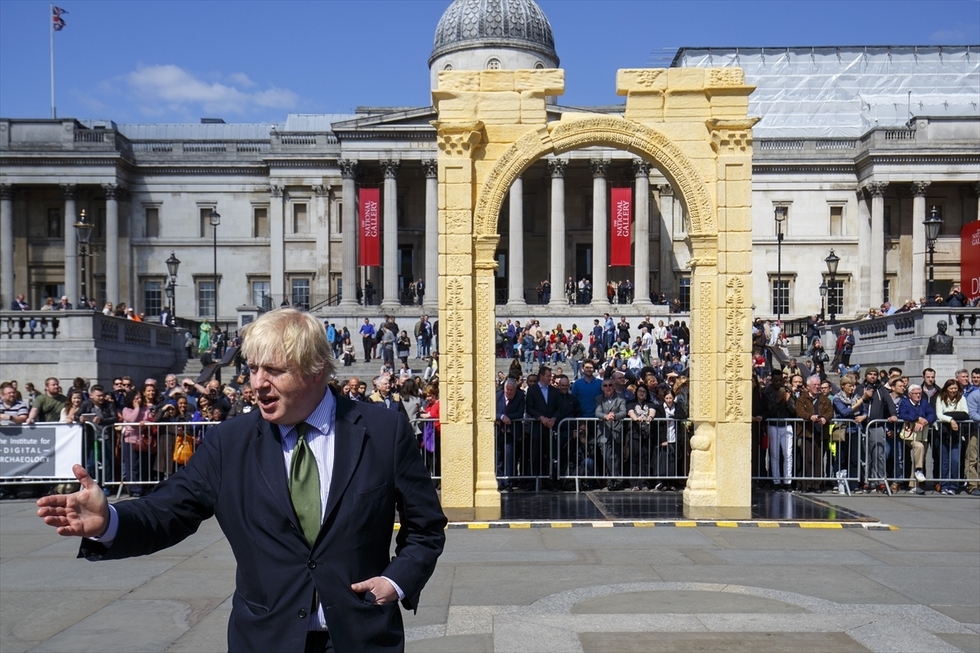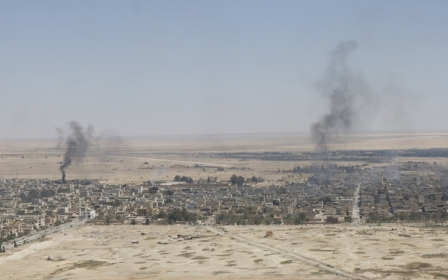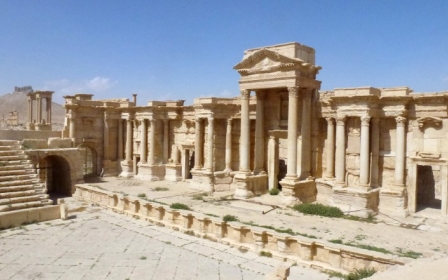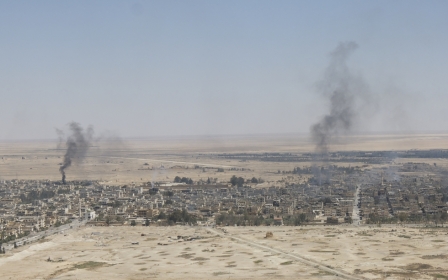Palmyra's Triumphal Arch recreated in London's Trafalgar Square

A marble replica of a Roman imperial archway destroyed by the Islamic State (IS) group in the historic Syrian city of Palmyra was unveiled on Tuesday in London's Trafalgar Square.
The six-metre tall scale recreation of the Triumphal Arch was created using state of the art 3D modelling technology pioneered by the Oxford-based Institute of Digital Archaeology and carved in Italy from Egyptian marble.
"If something can be rebuilt in this fashion, then those images of things being blown up and destroyed forever, that's undercut," said IDA director Roger Michel after the replica was revealed in front of a crowd of several hundred people.
"Part of what we're doing is to send the message that things that have been destroyed can be replaced and that act of destruction is not final," he added.
Palmyra, a UNESCO World Heritage Site northeast of Damascus known as the "Pearl of the Desert," was taken back by the Russian-backed Syrian army from IS fighters last month.
The city was a major tourist destination before the Syrian conflict erupted in 2011, known for its ancient ruins, colonnaded streets and 2,000-year-old temples.
IS seized Palmyra last year and beheaded its 82-year-old former antiquities chief three months later, using its ancient amphitheatre as a venue for public executions.
The remains of the Triumphal Arch, dating back to the era of Roman Emperor Severus in the third century, are now scattered on the ground, with only the two columns that once sustained the central crown still standing.
Syrian President Bashar al-Assad's government has presented the recapture of Palmyra as evidence of the fight it says it is waging against terrorist groups.
But a UN report in 2014 noted extensive damage to the site caused by Syrian government forces, with local archaeologists and activists documenting stolen busts and emptied chambers.
Experts are divided on whether the ancient ruins can be restored.
Syria's antiquities chief Maamoun Abdulkarim has said the job could be done in five years but Annie Sartre-Fauriat, a member of a UNESCO group of Syrian heritage experts has voiced doubts.
Abdulkarim repeated his appeal for international assistance for the restoration at Tuesday's event in London and suggested that the replica arch could go on display in the modern city of Palmyra.
"We need you, we need the international community," he said.
London Mayor Boris Johnson, who spoke at the unveiling ceremony, told the crowd that they were "here in a spirit of defiance of the barbarians who destroyed the original".
"We're here today in solidarity with the people of Syria," added Johnson, who is known for his love of classical antiquity.
"We all know that Syria's future depends on the conservation and protection of Syria's past."
The replica arch will be on display until Thursday before travelling to New York and Dubai for further public displays.
The arch is the highest-profile project yet for the IDA, which is also working on building a Million Image Database of 3D pictures of threatened monuments in conflict zones throughout the Middle East and north Africa.
It says it is distributing around 5,000 low-cost 3D cameras to volunteers around the regions who will then upload them to the open-source database.
New MEE newsletter: Jerusalem Dispatch
Sign up to get the latest insights and analysis on Israel-Palestine, alongside Turkey Unpacked and other MEE newsletters
Middle East Eye delivers independent and unrivalled coverage and analysis of the Middle East, North Africa and beyond. To learn more about republishing this content and the associated fees, please fill out this form. More about MEE can be found here.




